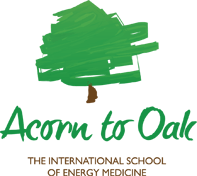Treating Atopic Dermatitis with Homoeopathy
Fri, 19 May 2017
Atopic dermatitis (AD), also called eczema, is an inflammatory, pruritic skin condition associated with immune dysfunction and altered skin barrier function. Prevalence is highest among children, at 10-20%, with 60% of cases beginning within the first year of life. Signs and symptoms include a pruritic, erythematous rash, which may present as dry or thickened skin with excoriations. Patients presenting with pyoderma often have a secondary bacterial infection which may require antibiotics. Location of AD in infants typically begins on the scalp (“cradle cap”), face/cheeks, or extensor surfaces of arms and legs; however, it may present at any location. It is important to check behind the ears, back of the neck, and in folds of skin in any infant suspected of AD. Risk factors for development of atopic dermatitis by 6 months of age include male gender, family history of atopy (asthma, eczema, allergic rhinitis), Black or Asian ethnicity, increased gestational age, and living in urban areas.
Associated Factors
Atopic dermatitis in infants is often accompanied by gastrointestinal conditions such as infantile colic, gastroesophageal reflux, and/or constipation, although this connection is largely ignored in medical literature. Underlying dysbiosis of gut microbiota gives rise to a multitude of digestive symptoms and can lead to altered immune function, contributing to AD. Treatment of the common fundamental cause often leads to resolution of multiple symptoms.
Symptoms of AD often begin or flare up during solid food introduction, an important indication of possible food sensitivity, to be discussed in greater detail below. Additionally, AD often aggravates during tooth eruption, due to skin irritation from excessive drooling and systemic inflammation. Keep this in mind when flare-ups occur, and ease teething symptoms while continuing treatment for AD.
Treatment
Atopic dermatitis is a common condition in pediatric health, and although generally not a serious condition, it can be quite uncomfortable for babies and distressing for parents. Although similar principles apply when treating children and adults, treatment of infant AD requires unique routes of administration and altered doses. The following section reviews prevention strategies and treatment for uncomplicated infant atopic dermatitis.
Breastfeeding
Exclusive breastfeeding has numerous benefits, including decreased risk of atopic dermatitis, especially in those with a family history of atopy. It is important to reinforce this as a benefit to parents concerned about atopy or with a family history of AD. It is important for naturopathic physicians to provide the support and resources required in the face of difficulties with breastfeeding to ensure continuance.
Homeopathy
Homeopathic remedies are an excellent adjunct to treatment of AD in infants, and remedies often change throughout the course of treatment. To give remedies to infants, crush pellets between 2 spoons, and place them inside their mouths. Some practitioners dissolve pellets in water, which is also effective. A wide variety of remedies may be indicated; the following is a sample of keynotes:
- Arsenicum – Very dry and flaky skin. Very itchy, scratches until raw. Uncovered areas of skin worst. Worse after midnight, cold air. Better warm air and hot bath.
- Graphites – Dry with honey-like discharge that crusts over. Slow to heal. Deep cracks in skin. Location: scalp, hairline, behind ears, skin folds, genitals, backs of hands. Worse at night and heat. Better cold applications.
- Petroleum – Extremely dry, almost painful. Red, raw, and moist skin surface, which oozes after scratching. Bleeds easily and becomes infected. Scratches until bleeds. Location: palms, fingertips, joints, genitals. Worse winter and cold air. Better warm air and dryness.
- Sulphur – Most common remedy for eczema. Dry, scaly, cracked areas of skin. Intense itching. Scratching until raw or bleeding. Location: hairline, face, elbows and knees. Worse night, heat, warmth of bed, and wool. Better dry, cool bathing.
Topical Applications
Although AD must be treated internally to address the root cause, topical applications are useful for symptom management, and aid in skin healing. Maintaining moisture of skin is imperative, so use appropriate oils or safe creams.
- Aloe vera – Aloe gel is intensely moisturizing and used for dry skin. For some patients, treatment with aloe topically may provide enough hydration to allow skin to heal naturally.
- Calendula officinalis – Calendula has anti-inflammatory, vulnerary, antipruritic, and antimicrobial properties when used topically. Typically used for more severe AD that requires wound-healing.
- Stellaria media – Chickweed has vulnerary and strong anti-pruritic properties when used topically, and is indicated especially in cases of intense itching.24
- Azadirachta indica – Neem is used topically for intensely dry skin, and has anti-inflammatory and anti-pruritic properties, which may partially be explained by its quercetin content.
Conclusion
Although atopic dermatitis is common among infants, it should not be viewed as “normal,” but rather a sign of deeper dysfunction. Many of the preventative measures used for AD have numerous other benefits for both mom and baby, and are easily incorporated into perinatal wellness plans. Treatment may vary depending on age of the infant and severity of symptoms; however, addressing the root cause and healing from the inside-out will have substantial benefit, not only on current symptoms of atopic dermatitis, but also prevention of related conditions in the future and overall health. For further information
If you would like to find out more if I can help with Atopic Dermatitis you can book in a Free 15 Minute Clarity Call by emailing me at pennie@acorntooak.org.uk
Comments
No comments

Get social with us on: